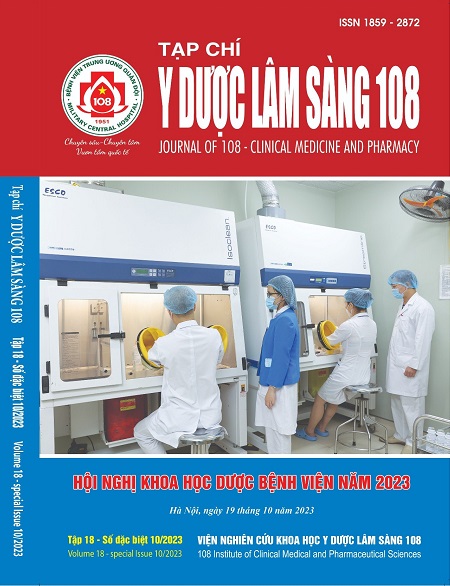Drug-related problems in elderly outpatients with type 2 diabetes at Huu Nghi Hospital
Main Article Content
Keywords
Abstract
Objective: To identify drug-related problems (DRP) on prescriptions and behaviors with associated factors in elderly outpatients with type 2 diabetes mellitus (DM). Subject and method: Outpatients aged 60 years or older were diagnosed with type 2 diabetes and treated at the Diabetes - Endocrinology Division of Huu Nghi Hospital between December 2019 and January 2020. A cross-sectional using a whole-sample was conducted. Information on diseases and medications was collected from medical records, and drug using behaviors of patients were assessed through interviews. Pharmacists detected DRPs first and then discussed them with physician to get agreement. Result: A total of 447 patients participated. Total of 1125 DRPs were detected, or 2.5 DRPs on average per patient. DRPs were presented in 91.7% of prescriptions, the most typical DRP was a lack of clear instructions regarding how and when to take medications. Nearly 50% of patients had behavioral DRPs, the most common DRPs were non-adherence to medication use and incorrect insulin injection technique. Multivariate regression analysis revealed that the more drugs in the prescription, the higher the risk of DRPs on prescription (OR = 1.66; p=0.0002). Patients prescribed insulin more likely to experience behavioral DRP than those who were not (OR = 17.95, p<0.001). Conclusion: DRPs frequently affects elderly patients with diabetes. Standardizing prescribing software and providing patients with counseling and education may help prevent DRPs.
Article Details
References
2. Bộ Y tế (2017) Hướng dẫn chẩn đoán và điều trị đái tháo đường típ 2.
3. Grant RW, Devita NG, Singer DE, Meigs JB (2003) Polypharmacy and medication adherence in patients with type 2 diabetes. Diabetes care 26(5): 1408-1412.
4. Fowler MJ (2008) Microvascular and macrovascular complications of diabetes. Clinical diabetes 26(2): 77-82.
5. Pharmaceutical Society of Australia (2011) Standard and guidelines for pharmacists performing clinical interventions.
6. Pharmaceutical Care Network Europe. Classification for Drug related problems V.9. 2020; Available from: https://www.pcne.org/upload/ files/334_PCNE_classification_V9-0.pdf.
7. Ayele Y et al (2018) Assessment of drug related problems among type 2 diabetes mellitus patients with hypertension in Hiwot Fana Specialized University Hospital, Harar, Eastern Ethiopia. BMC research notes 11(1): p. 728-728.
8. Huri HZ and Ling LC (2013) Drug-related problems in type 2 diabetes mellitus patients with dyslipidemia. BMC Public Health 13(1): 1192.
9. Granas AG, Berg C, Hjellvik V, Haukereid C, Kronstad A, Blix HS, Kilhovd B, Viktil KK, Horn AM (2010) Evaluating categorisation and clinical relevance of drug-related problems in medication reviews. Pharmacy world & science 32(3): 394-403.
10. Shareef J, Fernandes J, and Samaga L (2016) Assessment of clinical pharmacist interventions in drug therapy in patients with diabetes mellitus in a tertiary care teaching hospital. Diabetes & Metabolic Syndrome: Clinical Research & Reviews 10(2): 82-87.
11. Liu Z, Joerg H, Hao H, Xu J, Hu S, Li B, Sang C, Xia J, Chu Y, Xu D (2016) Efficacy of high-intensity atorvastatin for asian patients undergoing percutaneous coronary intervention. Annals of Pharmacotherapy 50(9): 725-733.
 ISSN: 1859 - 2872
ISSN: 1859 - 2872
